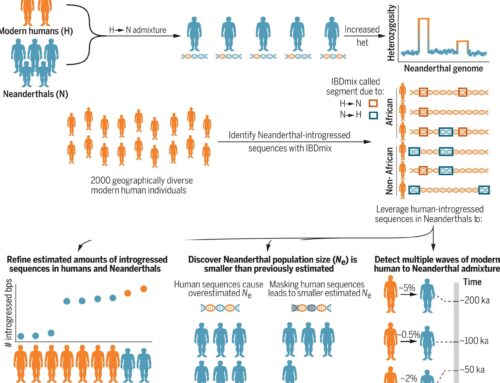Article courtesy of The Urban Monk
We’re Homo sapiens, not Neanderthals. Although the species diverged around 650,000 years ago, they also existed at the same time, and probably mated. However, we lived drastically different lifestyles, and eventually…
Neanderthals died out.
Neanderthals hunted – like the cavemen we picture in our minds grunting and wearing animal skins. Homo sapiens, our ancestors, farmed and domesticated animals. We lived settled lives and began creating societies centered around cooperation and mutual aid.
Even so, Neanderthals and Homo sapiens share the same lineage.
Biologically, we had a lot to do with each other, and a lot in common.
Recently, 50,000 year-old Neanderthal fecal matter was discovered in El Salt, Spain, and its analysis proved to be extremely illuminating regarding the intestinal make-up of our cousin species.
What they found was pretty involved.
First, several of the bacterial strains are still active in our gut flora today.
Second, for that to be true, these strains must be much older than 50,000 years – they have to be as old as the lineage split between our species and Neanderthals.
And third, through the miracle of paleomicrobiology – an emerging field that studies DNA sequences of ancient remains – we’re able to determine what Neanderthals had that we don’t have… and we can speculate about why.
So the Neanderthals Had Them… We’re Different, Right?
Sort of.
From an evolutionary standpoint, bacteria that we share in common with Neanderthals has stood the test of time…
It survived not only hundreds of thousands of years of evolution, but also a species split and all of the anthropogenic changes Homo sapiens implemented – think about how different life is for humans in the last century alone!
And through it all, our bodies have kept using certain gut bacteria.
It’s an especially necessary dialogue to keep feeding into now, because of the bacterial diversity crunch caused by our modern lifestyles – mostly sedentary, fed on processed foods, inundated with chemicals, taking synthetic pills, drinking and smoking, overusing antibiotics…
We know the list.
Because when those activities cause us to lose “old friends” in our microbiomes, our metabolism regulation, immunity, and mental health all suffer. Perhaps in ways that Neanderthals didn’t suffer…
So if we can identify what connects our microbial communities to the microbial communities of our ancient cousins, we can determine which to prioritize and how.
Let’s take a look at the major players…
Intestinal Bacterial Reruns
Among some of the findings that the scientists from the University of Bologna were able to discover, some of the main bacteria were…
Blautia obeum: This bacteria is associated with several functions. Firstly, it helps with weight regulation and reducing obesity. But it also plays a crucial role in maturing the bacteria in children’s microbiomes, which later inform adulthood microbiome habits and strength, and in recovering from bacterial infections like cholera.
Faecalibacterium: This bacteria is present in healthy gut environments, and is therefore associated with anti-inflammatory properties as it is only present in very low amounts in those with high inflammation. It’s also essential in breaking down dietary fibers.
Bifidobacterium: This bacteria helps to bolster and regulate our immune defenses, making it critical in not only safeguarding the gut from disease, but helping the gut complete one its most important purposes: informing the immune system’s actions. It also helps to crowd out harmful bacteria in the gut’s flora.
Missing from modern humans, but present in Neanderthal fecal matter, are some of those “old friends” we were talking about.
Spirochaetaceae, Prevotella, and Sesulfovibrio, while still present to some degree in modern hunter-gatherers and tribal/rural humans, have effectively disappeared from the microbiomes of modern urban dwellers.
This DNA sequencing also helps researchers gain insight into the dietary habits of Neanderthals – they ate a lot of meat, and thus had extra bacteria to help them process the cholesterol. But they also ate heavily plant based diets with plenty of vegetables to keep their microbiomes diverse.
We’re losing diversity…
Not just in our bodies, but in the world at large. Loss of biodiversity can be attributed to the same general causes as our loss of microbiome diversity – we’re not living connected to the Earth, using its resources as-needed, and we’re polluting ourselves in the process.
Maybe it wouldn’t be such a bad idea to take lessons from Neanderthals after all.



